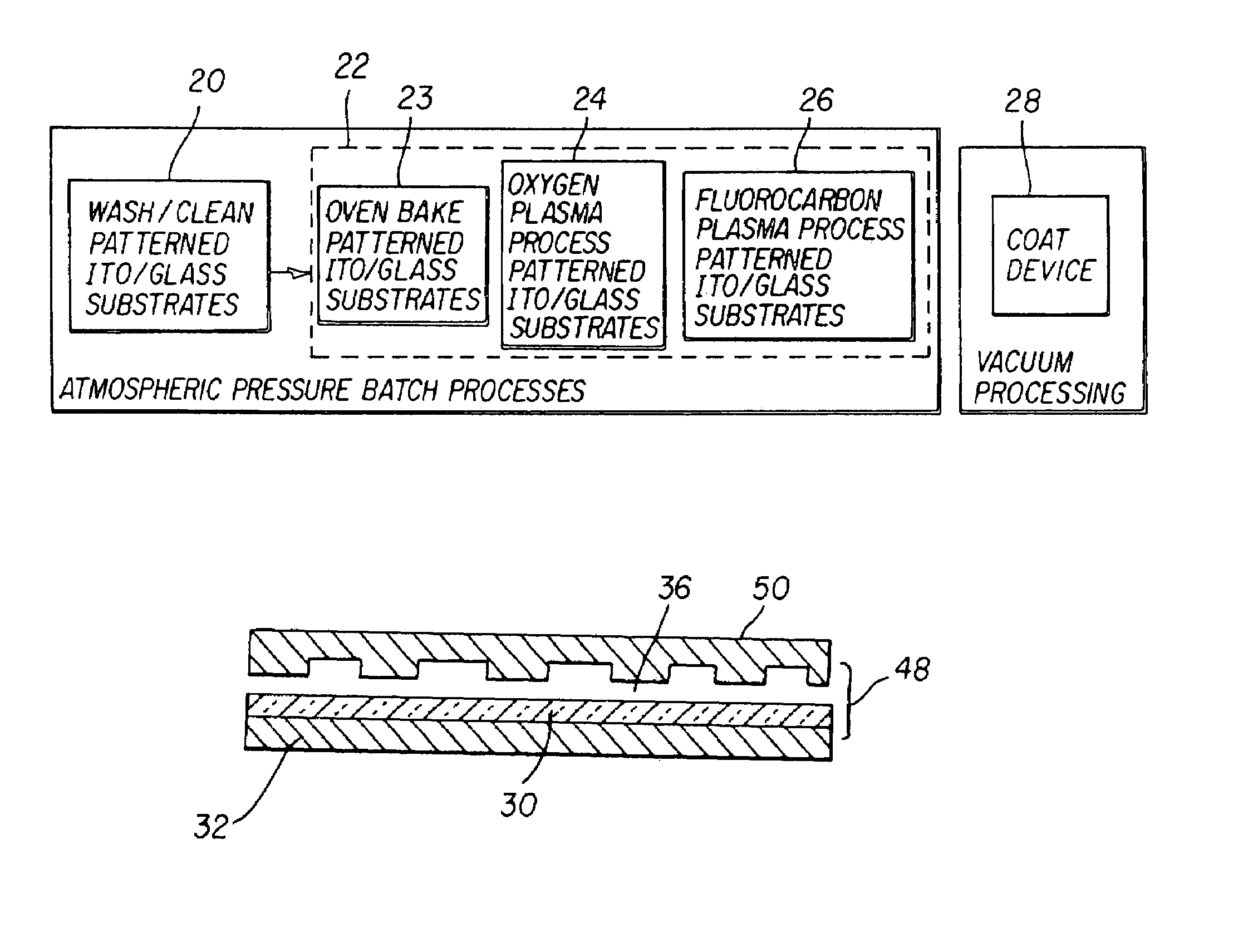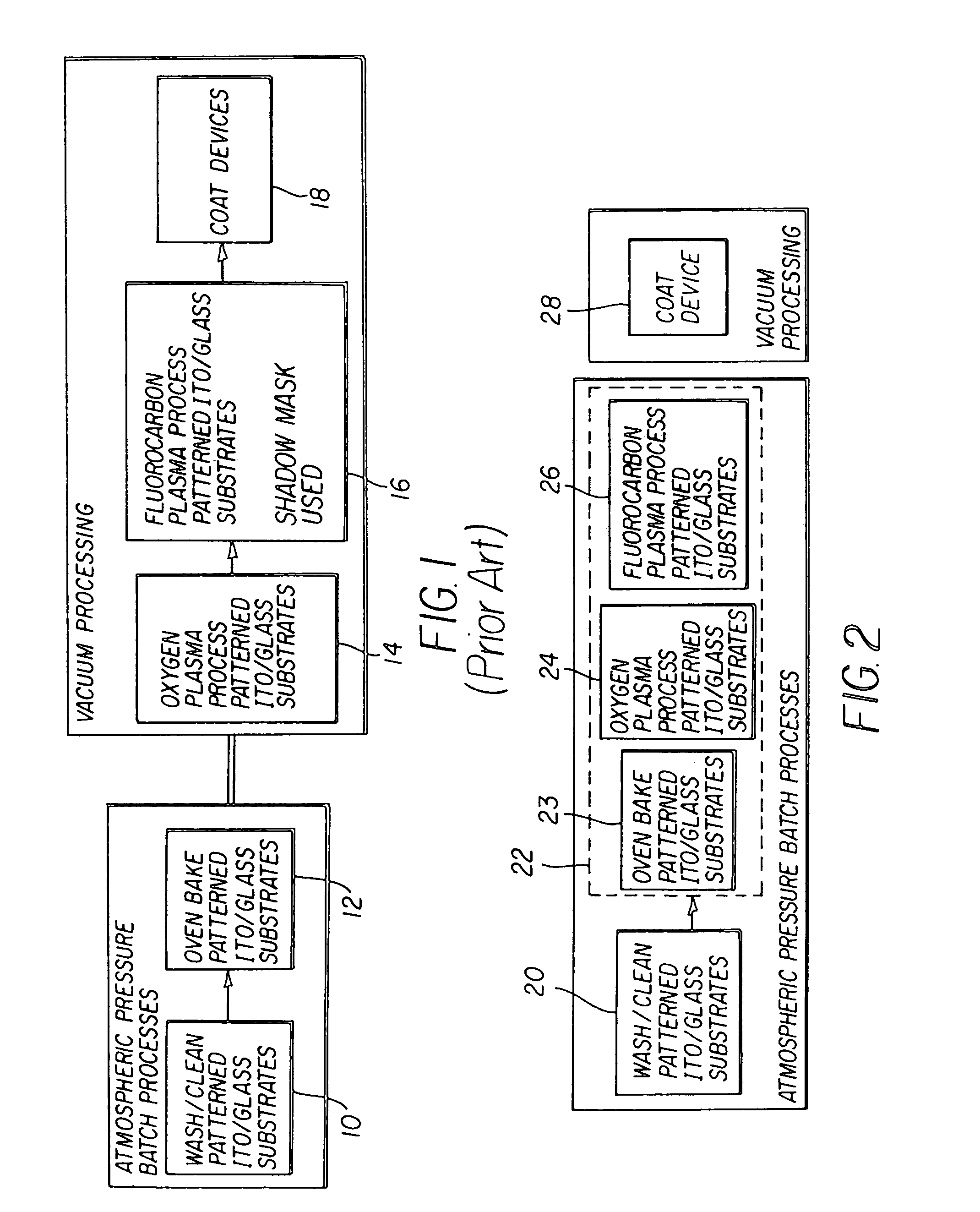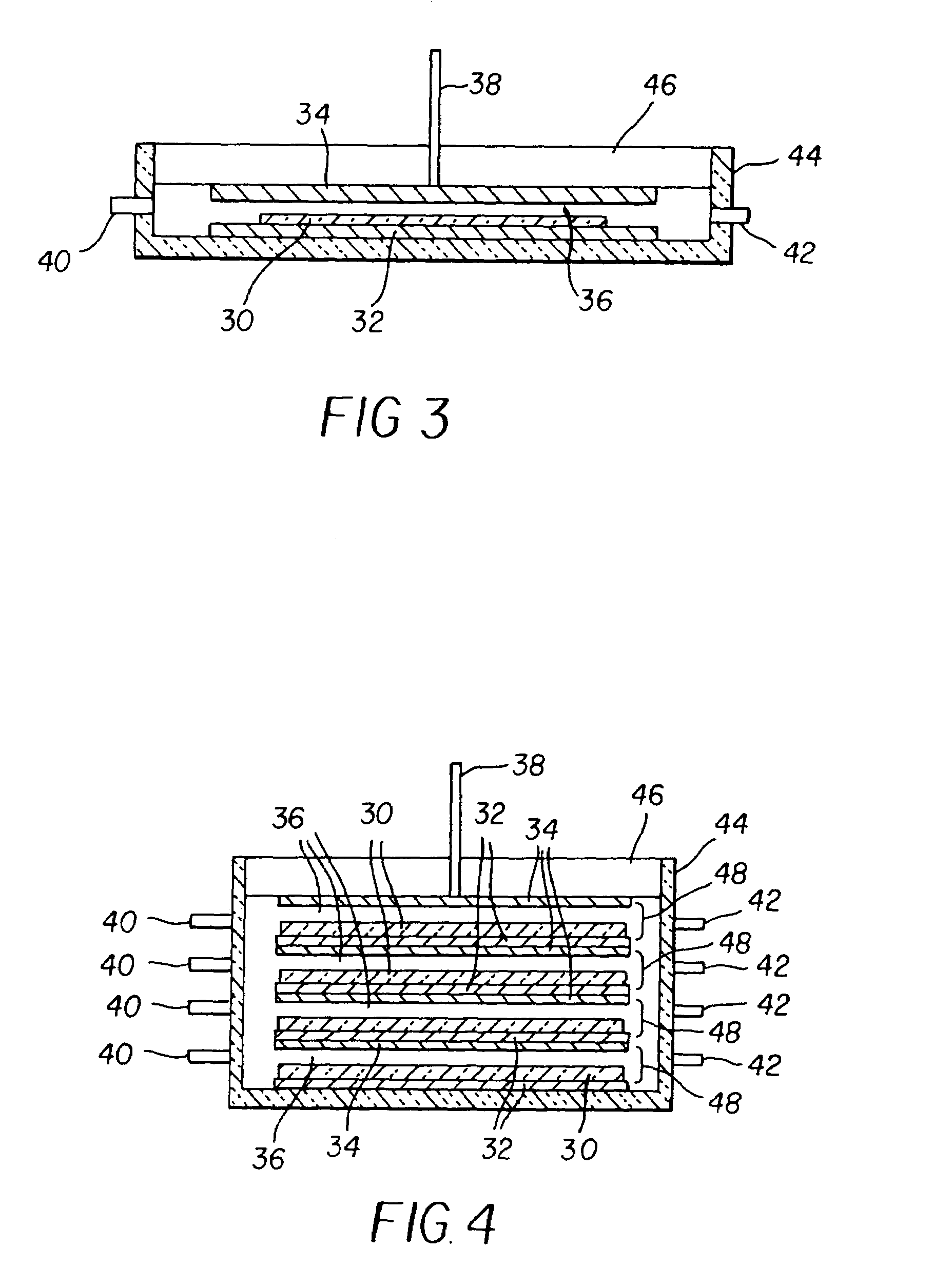Providing fluorocarbon layers on conductive electrodes in making electronic devices such as OLED devices
a technology of conductive electrodes and fluorocarbons, which is applied in the direction of basic electric elements, semiconductor devices, electrical equipment, etc., can solve the problems of high resistance of the medium, insufficient hole injection on the bare ito surface, and the operation of the el device requires an extremely high voltage (>100 volts) to achieve the effect of reducing the number of processing stages
- Summary
- Abstract
- Description
- Claims
- Application Information
AI Technical Summary
Benefits of technology
Problems solved by technology
Method used
Image
Examples
example 1
[0064]Glass substrates 7.6 cm×7.6 cm×1 mm thick were coated with 42 nm of indium tin oxide (ITO) and patterned to produce a set of ITO contacts (4 pairs). The sheet resistance of the ITO is roughly 50 Ohms / sq. The ITO / glass substrates were then cleaned in an ultrasonic bath in deionized water for roughly 10 minutes. The substrates were then spun dry under radiant heat. All samples in this example were vacuum plasma cleaned in a March Asher Model PX250 using flowing oxygen (40 SCCM) at a pressure of 28 Pa and a power of 300 W for 30 seconds. A control sample (A1) was additionally coated with CFx in the March Asher using CHF3 at a flow of 10 SCCM, a pressure of 36 Pa, and a power of 100 W for 10 seconds. A second control sample (A2) was not coated with any CFx. A third sample (A3) was placed in the dielectric barrier discharge cell. A mixture of helium, CF4 and CHF3 was established by flowing 8 slm, 0.1 slm (nominal), and 0.005 slm (nominal) of the respective gases into the discharge ...
example 2
[0067]Another series of samples was prepared similarly to samples A3 and A4 above, except that no vacuum plasma oxygen treatment was carried out prior to dielectric barrier discharge treatment. Instead, a helium oxygen mixture was admitted to the dielectric barrier discharge chamber and discharge treatments were carried out at 30–40 W for the times indicated in Table 2 (samples B1–B4). The oxygen was then shut off, and helium-CF4 or helium-CF4-CHF3 mixtures were established at the flows indicated in Table 2. After purging, a discharge treatment in the fluorocarbon bearing gas mixture was carried out at 30–40 W for 10 seconds. In each case, after all treatments were complete, the chamber was purged with helium and the sample was removed. The light-emitting diode devices thus made were then characterized with respect to light emission, current-voltage characteristics, and lifetime. Additional samples made with substantially lower oxygen flows (0.01 slm) during helium-oxygen discharge ...
example 3
[0069]Yet another series of samples was prepared similarly to samples B1–B4 above, except that a single dielectric barrier discharge process was used to perform simultaneous oxygen and CFx treatment. A helium-oxygen-fluorocarbon mixture (indicated in Table 3 for samples C1–C3) was admitted to the dielectric barrier discharge chamber, and discharge treatments were carried out at 25–30 W for 10 seconds. In each case, after all treatment was complete, the chamber was purged with helium and the sample was removed. As can be seen in Table 3, using the single dielectric barrier discharge process with both oxygen and fluorocarbon present resulted in improved device lifetime relative to the control sample (A2) having no CFx. Furthermore, samples C1–C3 had comparable luminance and drive voltage to the samples produced using vacuum plasma treatments.
[0070]
TABLE 3CFx / Oxygentreatment Gas FlowsCHF3CF4Driverelative lifetimeInitial Luminance(nominal(nominalVoltage @(normalized to(cd / m2) @SampleDes...
PUM
 Login to View More
Login to View More Abstract
Description
Claims
Application Information
 Login to View More
Login to View More - R&D
- Intellectual Property
- Life Sciences
- Materials
- Tech Scout
- Unparalleled Data Quality
- Higher Quality Content
- 60% Fewer Hallucinations
Browse by: Latest US Patents, China's latest patents, Technical Efficacy Thesaurus, Application Domain, Technology Topic, Popular Technical Reports.
© 2025 PatSnap. All rights reserved.Legal|Privacy policy|Modern Slavery Act Transparency Statement|Sitemap|About US| Contact US: help@patsnap.com



